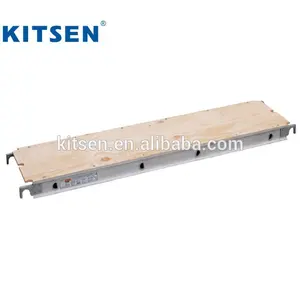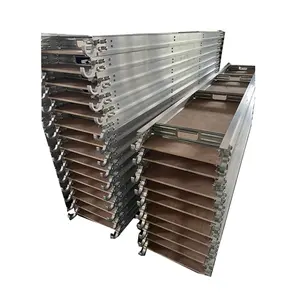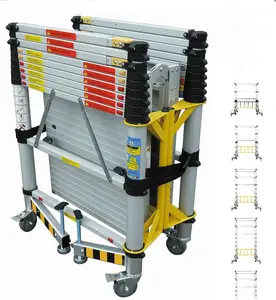Introduction
In the dynamic world of construction, efficiency, safety, and cost-effectiveness are paramount. One way to achieve these is through the use of plank scaffolding, a versatile and robust solution that has revolutionized construction projects. This article delves into the intricacies of plank scaffolding, exploring its various types, benefits, safety measures, and successful applications in real-world scenarios. It also provides a comprehensive guide on choosing the right plank scaffolding for your project and how to implement it effectively.
Understanding Plank Scaffolding
Scaffolding planks, also known as scaffold boards or walkboards, are integral to scaffolding structures in the construction industry. They provide the surface for workers and equipment, ensuring safety and stability. These planks come in various materials and designs to suit different applications. Wooden planks, specifically, are of a different grade than regular construction lumber, with specific requirements for ring count, defects, and grain slope. Metal planks, like steel and aluminum, are also common, each offering unique advantages.
Benefits of Plank Scaffolding in Construction
Plank scaffolding offers numerous advantages in construction. It enables easy access to high areas, providing a perfect balance for workers. Safety is ensured with its robust design, boosting productivity by facilitating efficient work. The assembly and dismantling process is straightforward, making it a practical choice. It can act as a bridge, connecting different areas of the construction site. Lastly, its durability ensures it lasts for a long time, making it a cost-effective solution.
Safety Measures with Plank Scaffolding
Safety is paramount when using plank scaffolding in construction. It's crucial to use proper safety equipment, including personal protective equipment (PPE) like hard hats, non-slip footgear, and fall arrest equipment. Mind the load limits of your scaffolding materials and designs, as exceeding these can lead to accidents. Regularly inspect the scaffolding materials and the site for any potential hazards. Stay organized and keep the site clear of unnecessary tools or materials. Lastly, ensure that everyone involved is fully licensed and trained in scaffolding safety.
Case Studies: Successful Construction Projects Using Plank Scaffolding
Industry professionals have shared their experiences with plank scaffolding. One highlighted the benefits of both wood and metal decking, emphasizing the importance of choosing based on project needs. Another, operating in a region prone to extreme weather, stressed the importance of preparing scaffolding to withstand harsh conditions. His company employs various safety measures, such as cleating the edges of wood planking, using extra counterweights, and designing their own steel plate assembly to ensure a secure hold even in a Category 2 hurricane.
Choosing the Right Plank Scaffolding for Your Project
Choosing the right plank scaffolding involves several considerations. Firstly, consider the type of scaffolding you'll be using. Metal scaffold boards are a versatile option. Secondly, consider the weight limit of the scaffold plank. For heavy-duty tasks, choose a scaffold board with a high weight limit. Lastly, consider the size of the scaffold plank. If unsure, opt for a longer scaffold plank that can be cut to size as needed. Always consult the manufacturer’s specifications before using a scaffold plank.
Implementing Plank Scaffolding in Your Next Project
Implementing plank scaffolding in your next project requires careful planning and execution. Start by organizing all your parts and tools. Assemble the frame, baseplates, and cross brace. Ensure the scaffold is secure and level, then install the wooden planks. Add guardrails for safety and set up a workstation on the scaffold platforms. Always maintain a safe distance from hazards like power lines. Using high-quality wooden planks ensures safety and reliability.
Conclusion
Plank scaffolding has undeniably transformed the construction industry, offering a balance of safety, efficiency, and cost-effectiveness. Its versatility allows it to be tailored to various project needs, with different materials and designs available. Safety measures, when properly implemented, ensure a secure working environment, while real-world case studies demonstrate its successful application. Choosing the right plank scaffolding requires careful consideration of several factors, and its implementation necessitates meticulous planning and execution. By harnessing the power of plank scaffolding, you can revolutionize your construction projects, ensuring they are completed safely, efficiently, and within budget.










































 浙公网安备 33010002000092号
浙公网安备 33010002000092号 浙B2-20120091-4
浙B2-20120091-4